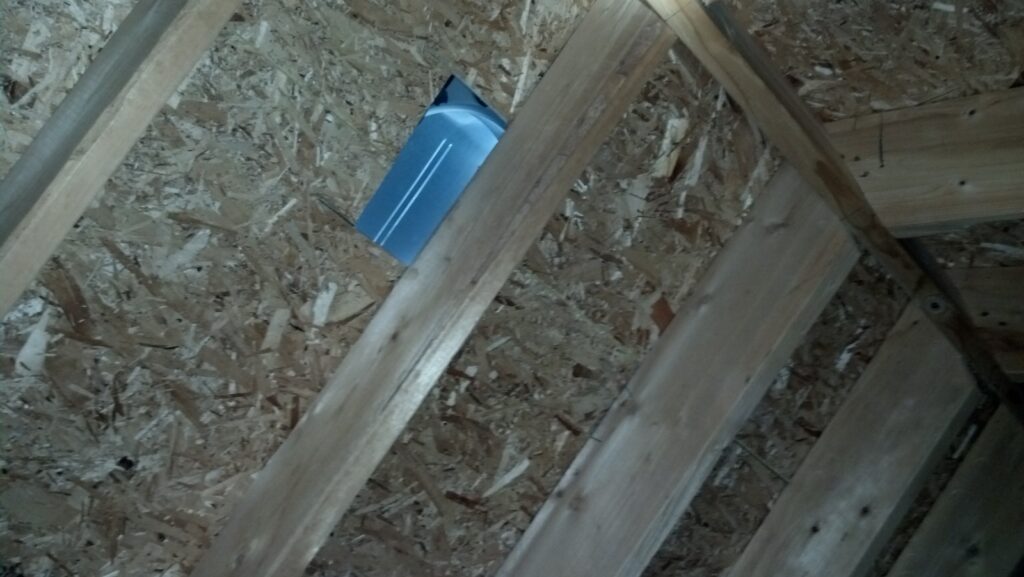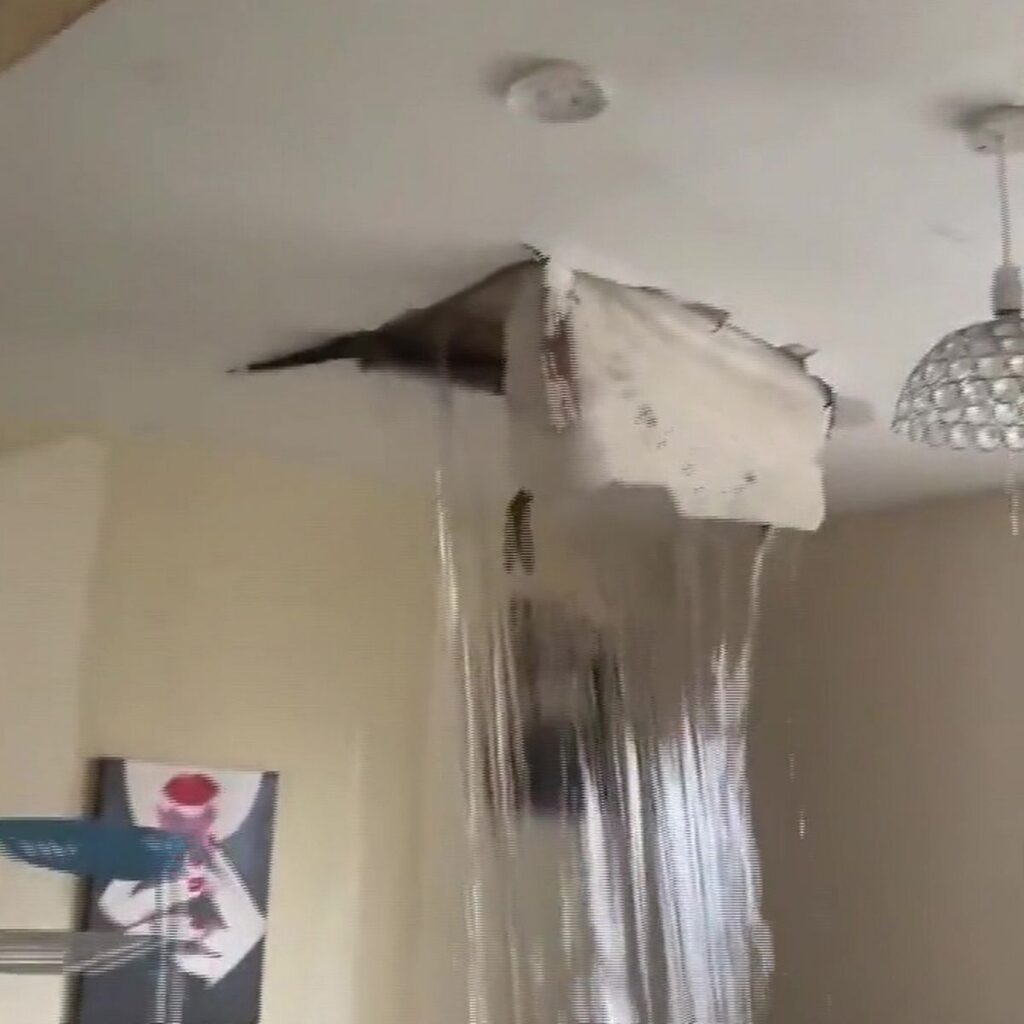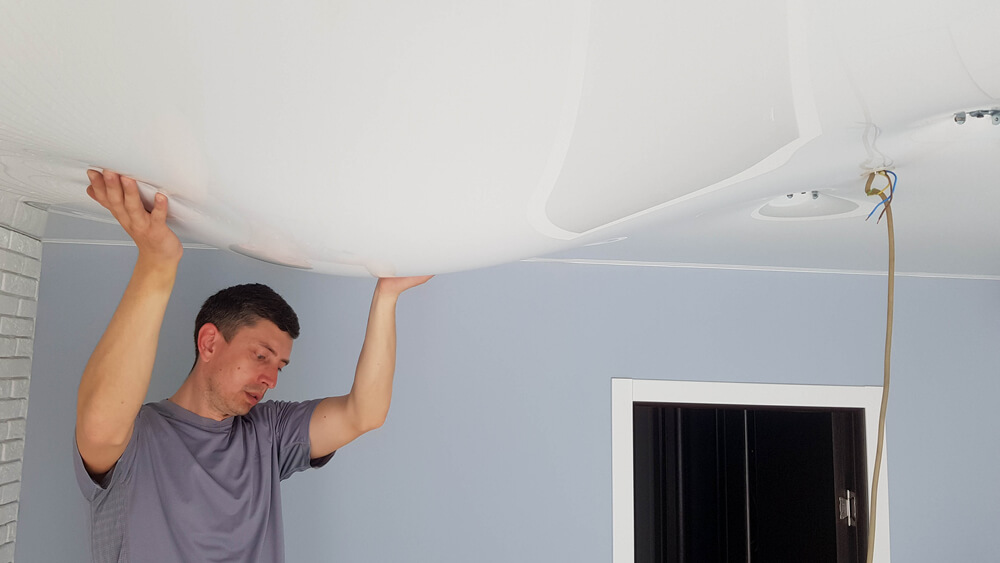If you’ve ever wondered whether water can infiltrate your home through roof vents, then this article is for you. Delve into the potential risks of water leakage through roof vents and learn how to prevent this common problem. Whether you’re a homeowner looking to safeguard your property or simply curious about the inner workings of your roof, understanding the possibility of water leaks through roof vents is crucial. Read on to explore this topic and gain valuable insights to protect your home.


Understanding Roof Vents
Roof vents are an essential component of any roof system, as they play a crucial role in maintaining a healthy and functional home. These vents are designed to allow air circulation and ventilation in the attic space, which helps to regulate temperature, reduce moisture, and prevent the buildup of harmful gases. Without adequate roof vents, your home can become a breeding ground for mold and may even experience structural damage over time.
What are roof vents?
Roof vents, also known as attic vents or ventilation vents, are openings in the roof that allow air to flow in and out of the attic space. They come in various shapes and sizes, but their primary purpose remains the same – to ensure proper air circulation and prevent moisture buildup. These vents work by allowing warm, moist air to escape from the attic, while simultaneously drawing in fresh air from the outside. This exchange of air prevents condensation, reduces the risk of mold growth, and helps to maintain a comfortable environment in your home.
Types of roof vents
There are several types of roof vents available, each with its own unique features and benefits. The most common types include:
- Ridge Vents: These vents are installed along the peak of the roof, allowing hot air to escape naturally. They provide excellent ventilation and are aesthetically pleasing as they blend seamlessly with the roofline.
- Soffit Vents: Placed in the underside of the eaves, soffit vents are responsible for drawing fresh air into the attic space. They work in conjunction with other types of vents to create a balanced airflow system.
- Gable Vents: These vents are installed on the gable ends of the roof and allow air to circulate vertically. Gable vents can be quite effective in older homes with limited attic space.
- Turbine Vents: These vents feature a wind-driven design, which creates a suction-like effect, drawing air out of the attic. They are particularly useful in areas with high wind conditions.
- Static Vents: Also known as box vents or roof louvers, static vents are installed near the roof’s ridge to allow hot air to escape. They do not require any moving parts or external power source, making them low-maintenance and reliable.
Importance of roof vents
Proper ventilation is a key factor in maintaining the health and longevity of your home. Roof vents play an essential role in preventing a variety of problems that can arise from poor attic ventilation. Here’s why roof vents are important:
- Temperature Regulation: Roof vents allow hot air to escape from the attic, preventing the buildup of heat that can damage your roof and increase cooling costs.
- Moisture Control: Proper ventilation helps to remove excess moisture from the attic, reducing the risk of mold, mildew, and rot. It also prevents condensation, which can lead to the deterioration of insulation and structural elements.
- Extended Roof Lifespan: By reducing the temperature extremes in the attic, roof vents help to preserve the lifespan of roofing materials by preventing excessive expansion and contraction.
- Energy Efficiency: A well-ventilated attic can significantly reduce energy consumption by minimizing the strain on your HVAC system. This, in turn, can lead to lower utility bills.
- Improved Indoor Air Quality: With proper ventilation, stale and polluted air is replaced with fresh air from the outside, ensuring a healthier indoor environment for you and your family.
Roof Vent Leaks: Causes and Prevention
While roof vents are designed to be watertight, they can still be susceptible to leaks if not properly installed or maintained. Understanding the potential causes of roof vent leaks, recognizing the signs of a leak, and taking preventative measures can help you avoid costly repairs and damage to your home.
Potential causes of roof vent leaks
- Cracked or Damaged Vent Boot: The vent boot is a rubber seal that surrounds the base of the vent pipe where it meets the roof. Over time, the boot can deteriorate or crack, creating a potential entry point for water.
- Improper Installation: If roof vents are not installed correctly, gaps or seams may form, allowing water to penetrate the roof. This can occur if flashing is not properly sealed or if the vent is not secured tightly to the roof.
- Wind-Driven Rain: High winds can force rainwater into openings around the vent, leading to leaks. This is particularly common with turbine vents or other types of vents that rely on wind for ventilation.
- Ice Dams: In colder climates, ice dams can form on the roof’s edge, preventing melting snow from properly draining off the roof. This can result in water backing up under the roof shingles and finding its way into the attic through roof vents.
- Clogged or Blocked Vents: Debris, leaves, or animal nests can accumulate in roof vents, obstructing the airflow and preventing proper ventilation. This can lead to excess moisture buildup and potential leaks.
Signs of roof vent leaks
It’s important to be aware of the warning signs that indicate a potential roof vent leak. These signs may include:
- Water Stains on the Ceiling: Look for yellow or brown discoloration on the ceiling around the area where the vent is located.
- Damp or Musty Odors: If you notice a persistent musty smell in your home, it could be a sign of water leaking through the roof vents.
- Mold or Mildew Growth: Excessive moisture from a roof vent leak can create the ideal conditions for mold and mildew to thrive. Check for any visible signs of mold growth in your attic or near the vent area.
- Peeling or Bubbling Paint: Moisture from a roof vent leak can cause the paint on your ceiling or walls to bubble or peel.
- Dripping Sounds: If you hear dripping sounds coming from the ceiling when it rains, it could be an indication of a roof vent leak.
Prevention and maintenance
Taking preventative measures and performing regular maintenance can help minimize the risk of roof vent leaks. Here’s what you can do:
- Regular Inspections: Conduct visual inspections of your roof vents at least once a year to ensure they are securely in place and free of any visible damage or debris. It’s a good idea to perform these inspections after any severe weather events as well.
- Clean the Vents: Keep roof vents clean and free from debris by gently removing any leaves, twigs, or nests that may accumulate over time. This will help prevent blockages and maintain proper airflow.
- Check the Flashing: Inspect the flashing around the vent pipe for any signs of damage or deterioration. If you notice any issues, such as gaps or cracks, it may be necessary to reseal or replace the flashing.
- Professional Maintenance: Consider hiring a professional roofing contractor to perform regular maintenance on your roof vents. They can assess the condition of the vents, clean or repair them as necessary, and provide expert guidance on preventing leaks.
- Address Issues Promptly: If you notice any signs of a roof vent leak, such as water stains or mold growth, it’s important to address the issue promptly. Ignoring a leak can lead to more significant damage and costly repairs down the line.


Common Problems with Roof Vents
Though roof vents are designed to be durable and long-lasting, they can sometimes experience problems that affect their functionality and effectiveness. Understanding these common issues can help you identify and address them promptly.
Improper installation
One of the most common problems with roof vents is improper installation. If the vents are not correctly installed, gaps and seams can form, providing opportunities for water to penetrate the roof. It’s essential to ensure that the vents are securely fastened to the roof and properly sealed to prevent any leaks. If you suspect that your roof vents were not installed correctly, it’s best to consult a professional roofing contractor to assess the situation and provide guidance on the necessary repairs.
Cracked or damaged vent covers
Over time, vent covers can become cracked, worn, or damaged due to weather exposure or other factors. These cracks or damages can allow water to seep into the attic, causing leaks. Regularly inspecting your vent covers for any signs of damage and replacing them as needed can help prevent potential leaks. It’s important to choose high-quality vent covers that are durable and designed to withstand the elements.
Blocked vents
Another common problem with roof vents is blockages caused by accumulated debris, such as leaves, twigs, or animal nests. Blocked vents can hinder proper airflow and ventilation, leading to excess moisture buildup and potential leaks. Regularly cleaning your roof vents to remove any debris can help maintain their functionality and prevent blockages. If you’re unsure about how to safely clean your vents, it’s advisable to seek professional assistance.
Effects of Water Leaks through Roof Vents
Water leaks through roof vents can have a range of detrimental effects on your home. Understanding these effects can help you appreciate the importance of promptly addressing any leaks and preventing them in the future.
Water damage to the attic
One of the immediate consequences of a roof vent leak is water damage to the attic. The excess moisture can saturate insulation, wood beams, and other structural elements, leading to rot, mold growth, and deterioration. Over time, this can compromise the structural integrity of your attic and potentially spread to other areas of your home. Repairing water damage can be costly and time-consuming, making it crucial to address roof vent leaks as soon as possible.
Structural damage to the roof
If left unattended, water leaks through roof vents can also cause significant damage to the roof structure itself. The constant exposure to moisture can weaken roof decking, rafters, and trusses, potentially leading to sagging or collapsing roofs. Structural repairs can be extensive and expensive, underscoring the importance of regular maintenance and prompt leak detection.
Mold and mildew growth
Excess moisture from roof vent leaks creates the ideal environment for mold and mildew to thrive. These fungal growths not only pose health risks to occupants but can also cause further damage to your home. Mold and mildew can spread rapidly and are known to worsen respiratory conditions and allergies. Additionally, removing mold and mildew can be a costly and challenging process, requiring professional remediation services.


How to Identify Roof Vent Leaks
Detecting roof vent leaks early on is crucial for minimizing damage and preventing further issues. Here are some steps you can take to identify roof vent leaks:
Check for water stains or discoloration on the ceiling
Inspect the ceiling areas around your roof vents for any signs of water stains or discoloration. These can indicate that water is seeping in through the vents and making its way into your home. Pay attention to any changes in color or texture and investigate further if you notice these signs.
Inspect the attic for water damage
Regularly inspect your attic for any signs of water damage, particularly around the area where the roof vents are located. Look for wet spots, dampness, or the presence of mold or mildew. Be thorough in your examination, as roof vent leaks may not always be immediately visible.
Look for signs of water around the roof vents
During or after rainstorms, visually inspect the roof vents from the ground or with binoculars for any signs of water pooling or running down the roof. This can be an indication that water is entering through the vents or that the vents are not adequately diverting the water away.
Fixing Roof Vent Leaks
Addressing roof vent leaks promptly is essential to prevent further damage to your home. While some minor repairs can be done by homeowners, it’s important to engage professional assistance for more extensive or complex issues. Here are some common methods for fixing roof vent leaks:
Roof vents maintenance and cleaning
Regular maintenance and cleaning of your roof vents can help prevent leaks and maintain their functionality. Clean the vents by removing any debris, such as leaves or twigs, using a soft brush or compressed air. Ensure that the vents are properly sealed and securely fastened to the roof. It’s important to exercise caution and follow safety guidelines when working on the roof, as it can be dangerous.
Repairing damaged vent covers
If the vent covers are cracked or damaged, they should be replaced to prevent water from entering your home. Remove the damaged vent covers and replace them with new ones that are compatible with your vent system. Ensure that the new covers are properly sealed to prevent future leaks.
Sealing or resealing roof vents
If you suspect that the roof vents are not adequately sealed, it may be necessary to apply sealant or reseal them. Use a high-quality, waterproof sealant specifically designed for roofing applications. Carefully inspect the seals around the vent pipes and flashing, and apply the sealant as needed to create a watertight barrier.


Calling in the Professionals
While some minor roof vent repairs can be done by homeowners, it’s often best to seek professional assistance to ensure the job is done correctly and to minimize the risk of further damage. Here are some instances when it’s advisable to contact a roofing contractor:
When to contact a roofing contractor
- If you are unsure about the cause of the roof vent leak or the extent of the damage
- If the leak persists or worsens after attempting DIY repairs
- If the leak has caused significant water damage or mold growth
- If the roof vents require complex repairs or replacement
- If you need expert advice on preventative measures or upgrading your roof ventilation system
Benefits of professional roof vent leak repair
Hiring a professional roofing contractor offers several benefits when it comes to roof vent leak repair. These include:
- Expertise: Roofing professionals have the knowledge and experience to accurately diagnose the cause of roof vent leaks and provide the most effective solutions.
- Quality Workmanship: Professionals have access to high-quality materials and tools to ensure that the repairs are done to the highest standards.
- Time and Cost Savings: By engaging professionals, you can avoid the hassle and potential errors that come with DIY repairs. They can complete the repairs efficiently, saving you time and potentially costly mistakes.
- Safety: Roof work can be dangerous, especially for those without proper training or equipment. Professionals are equipped with the necessary safety gear and have the skills to navigate rooftops safely.
Choosing a reliable roofing professional
When selecting a roofing contractor to repair roof vent leaks, it’s important to choose a reliable and reputable professional. Consider the following factors:
- Experience: Look for contractors with substantial experience in roof repair and ventilation systems.
- Licenses and Insurance: Verify that the contractor is licensed and insured to protect yourself and your property in case of accidents or further damage.
- References and Reviews: Request references from past clients or read online reviews to gauge the contractor’s reputation and quality of work.
- Written Estimates: Obtain detailed written estimates from multiple contractors to compare prices and ensure transparency.
- Warranty: Inquire about the contractor’s warranty policies for both materials and workmanship.
Preventing Roof Vent Leaks
Prevention is key when it comes to roof vent leaks. By taking proactive measures, you can minimize the risk of leaks and prolong the life of your roof vents. Here are some preventative steps to consider:
Regular roof inspections
Schedule regular roof inspections, preferably conducted by a professional contractor, to identify any potential issues before they escalate. Inspections should include a thorough examination of the roof vents, flashing, seals, and surrounding areas. Routine inspections can help catch minor problems early on and address them before they become major leaks.
Proper installation and maintenance
Ensure that your roof vents are correctly installed and sealed during the initial installation process. Engage the services of a professional roofing contractor to ensure that the vents are positioned correctly and securely fastened to the roof. Additionally, perform regular maintenance on your roof vents by keeping them clean, inspecting for damages, and addressing minor issues promptly.
Protective measures in extreme weather
Implement protective measures during extreme weather events to minimize the risk of roof vent leaks. For example, during heavy rain or snowstorms, consider applying waterproof sealant around the vent pipes or using temporary covers to deflect water away from the vents. Taking these precautions can help prevent water penetration and reduce the chances of leaks occurring.


Conclusion
Understanding roof vents and their importance is crucial to maintaining a healthy and functional home. Roof vent leaks can lead to a range of issues, including water damage, structural deterioration, and mold growth. By familiarizing yourself with the potential causes of leaks, recognizing the signs, and implementing preventative measures, you can minimize the risk of roof vent leaks. However, when it comes to repairs and maintenance, it’s often best to seek professional assistance to ensure the job is done correctly and safely. Regular inspections, proper installation and maintenance, and protective measures during extreme weather can help prolong the lifespan of your roof vents and ensure that they continue to function effectively for years to come.

